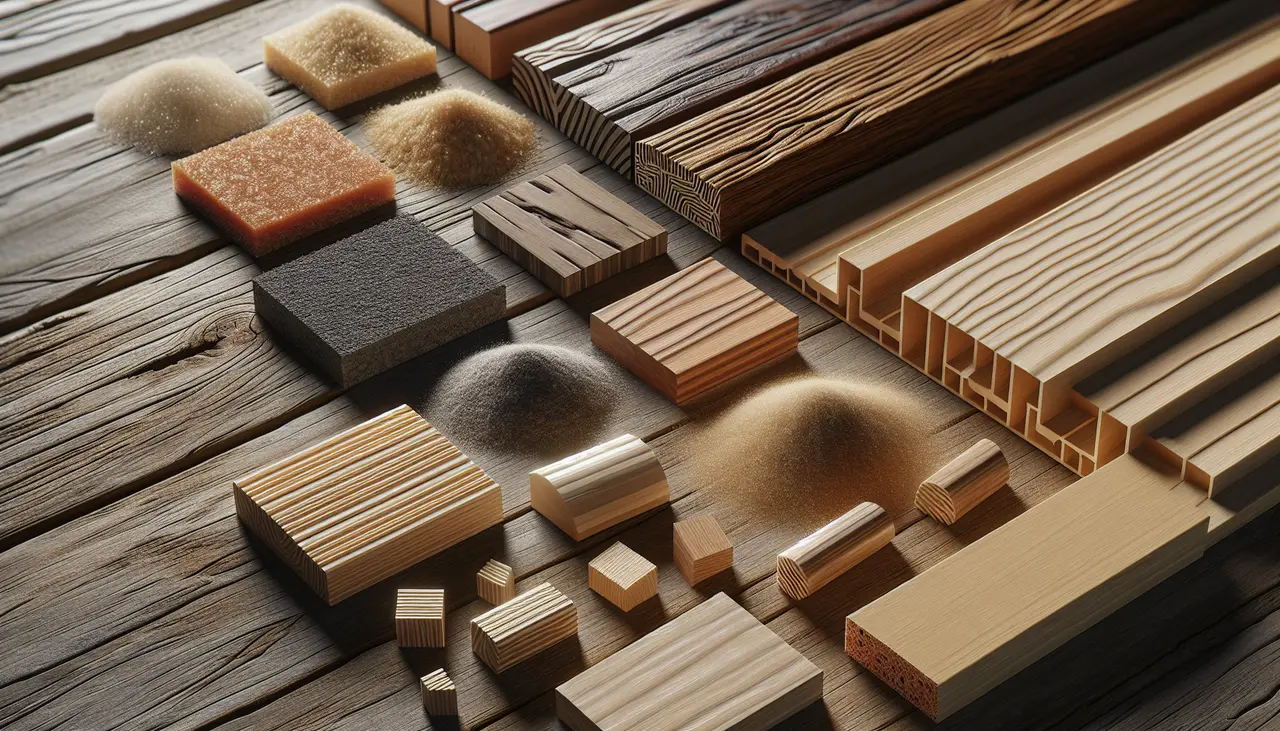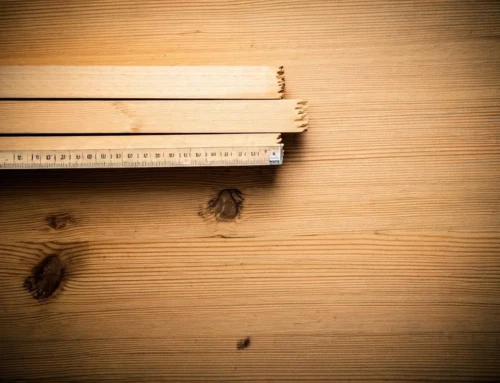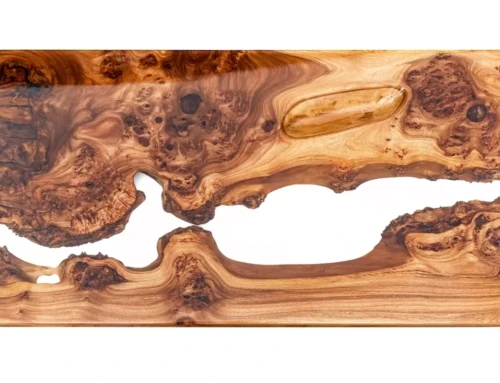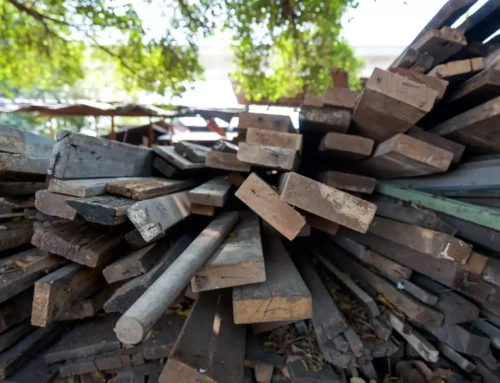Introduction to Decking and Siding Materials
Picking the right material for your decking, siding or fencing project is important. There is no lack of options these days and it generally comes down to real wood versus synthetics. You’ve got plastic composites, cement, vinyl, and your lumber options like Cedar, Redwood, and Mahogany. Each has its pros and cons, but there’s something about real wood that stands out. Real wood brings a natural warmth and beauty that man-made materials struggle to replicate. Plus, it has a unique way of aging gracefully, adding character to your home over time. While materials like plastic, cement, and vinyl promise low maintenance and uniformity, they very rarely, if ever live up to what they claim. They also miss the mark on authenticity and eco-friendliness. The manufacturing process of composite, cement and vinyl produces far more toxins and green house gases then it’s lumber counterparts which actually remove greenhouse gasses from the atmosphere. So, when deciding on decking or siding, look beyond manufacture’s empty promises. Consider how your choice will affect your home’s look, feel, and impact on the environment in the long run. Real wood offers a timeless charm that’s hard to match, making it worth considering for those who value quality, natural beauty and being “green.”
Unlike brick, cement and composite lumber, our lumber is renewable and biodegradable. We source our WRCedar, mahogany and redwood from the most sustainably managed forests in the world. Real wood connects your home to nature in a beautiful way. It is also a sustainable choice when sourced responsibly.
In fact It’s not just about aesthetics; it’s about creating a space that feels inviting and genuinely connected to the natural world.
The Natural Beauty of Real Wood
Real wood wins hands down when it comes to natural beauty. Whereas plastic, cement, or vinyl look fake, real wood has a unique charm that easily blends with nature. Each plank tells a story through its grains and textures, offering a warmth and authenticity these alternatives simply can’t match. Plus, real wood ages gracefully, developing a rich patina that adds character and elegance to any space. Whether you’re decking out your backyard or siding your home, choosing real wood ensures a timeless look that synthetic materials just can’t replicate.
Durability and Longevity of Real Wood Versus Synthetics
Real wood beats synthetics in the decking and siding game, and it’s not even close. Here’s the deal: wood lasts. Materials like redwood, Cedar and Mahogany can stand the test of time, enduring the elements like a champ. Unlike its synthetic counterparts, which can fade, crack, split or peel, wood maintains its integrity and appearance for years. Now, you might hear folks claim that alternatives like vinyl or cement are “maintenance-free” options, but let’s be honest, “maintenance-free” often translates to “it’ll survive, but it won’t look good doing it.” After a couple years what you are often left with is scratched, faded, or warped material. Alternatively, wood not only lasts but also ages gracefully, gaining character and beauty as the years roll by. And if you’re worried about durability, consider this: with proper care and maintenance, a wood deck or siding can easily last several decades. Sure, you might need to refinish or sand the wood now and then, but that’s a small price to pay for a material that offers unmatched beauty, warmth, and longevity. Once scratched it’s near impossible to fix composite, vinyl or cement products. There’s nothing worse then feeling “stuck” with a product because you paid a lot of money for it but it looks terrible. Bottom line: when it comes to durability and longevity, real wood has a proven track record that plastic, cement, and vinyl just can’t match.
Environmental Advantages of Choosing Real Wood Versus Synthetics
Choosing wood over plastic, cement, and vinyl for decking or siding isn’t just about the looks or feeling natural under your feet or hands. It’s a choice that benefits the environment too. Wood is a renewable resource. Unlike plastic or cement, which require fossil fuels for production, wood comes from trees—a resource we can keep planting and regrowing. Plus, wood absorbs carbon dioxide while it grows, pulling this greenhouse gas out of the atmosphere. This helps fight climate change. Trees also provide oxygen, which is vital for every living creature on Earth. When managed responsibly, using wood for construction can encourage more tree planting, leading to more forests and a better environment.
Moreover, at the end of its life, wood is biodegradable. It breaks down and returns to nature much faster than materials like plastic or vinyl, which can sit in landfills for hundreds of years. In contrast, wood decompose quickly and will enrich the soil. This doesn’t just reduce waste; it supports a healthier ecosystem.
So, when you choose wood, you’re making a choice that’s good for the planet. It’s a step towards a more sustainable, responsible way of building that respects and preserves our natural resources. Remember, opting for wood helps curb the reliance on non-renewable materials, diminishes carbon footprint, and promotes eco-friendly practices in construction and beyond.
Maintenance: Real Wood Versus Synthetics
When it comes to maintenance, each decking or siding material has its trade-offs. Wood requires regular care, including staining or painting and sealing to protect it from elements like moisture and sunlight. Without this upkeep, wood can warp, rot, or get infected with termites. But, if you’re up for the yearly touch-up, the natural beauty of wood is hard to beat, and with proper care, it can last decades.
Plastic and vinyl, on the other hand, are nearly maintenance-free. Just a simple wash with soap and water, and you’re good. No need for staining, painting, or sealing. However, they can get discolored over time due to constant sun exposure, and once damaged, they are hard to repair.
Cement siding is incredibly durable and resistant to elements that would typically damage wood, such as water and pests. It rarely ever needs repainting and is not prone to warping or rotting. Though, it might need occasional cleaning to remove dirt build-up.
Between these choices, if you don’t mind the occasional maintenance, wood can offer a timeless aesthetic that evolves beautifully with your home. If convenience tops your list, then plastic, vinyl, or cement might be your best bet, though they might lack the warmth and character wood provides.
Cost-Effectiveness of Wood in the Long Run
When it comes to decking or siding, picking real wood might seem pricier at first glance compared to synethetic options. However, if we dive deeper into the long-run scenario, wood stands out as a cost-effective choice. Initially, yes, the upfront cost of natural wood can be higher. But, let’s not jump to conclusions based on the purchase price alone. Wood’s durability and longevity mean fewer replacements over time. Unlike plastic or vinyl that might fade, crack or become brittle under sun exposure, well-maintained wood can last decades, adding timeless beauty to your home. Moreover, if you’re thinking about selling your home in the future, wood siding and decking can significantly boost curb appeal and property value, making it a smart investment. In terms of maintenance, wood does require regular treatments to protect against moisture and pests, but this cost balances out when considering the lifespan of materials like cement or vinyl, which might need more frequent replacements due to damage or going out of style. So, when you factor in replacement costs, maintenance, and the potential increase in property value, real wood emerges as a remarkably cost-effective option for those willing to make the initial investment.
The Aesthetic Appeal of Wood in Home Design
Wood brings warmth and natural beauty to any home design that synthetic materials simply can’t match. Its unique grains, textures, and colors add a depth and character to decks, siding, and interiors that plastic, cement, and vinyl struggle to replicate. Imagine stepping onto a wooden deck; it feels soft underfoot, unlike the hard coldness of concrete. Wood also ages gracefully, developing a rich patina over time that adds to its charm. This natural aging process makes a wooden deck or siding not just a feature of your home but a living piece of art that evolves. Plus, wood’s versatility means it can suit any style, from rustic to modern, making it a universally appealing choice for homeowners who value aesthetics and quality in their living spaces. Unlike the uniformity of manufactured materials, wood ensures your home stands out with a distinct look.
Impact on Home Value: Real Wood vs. Synthetic Materials
When it comes to decking or siding, choosing real wood can boost your home’s value more than you might think. Synthetic materials might offer ease in maintenance, but they don’t have the same warmth and timeless appeal as wood. Potential buyers often see wood as a premium, natural material that adds character and craftsmanship to a home. This perception can significantly increase the resale value of your house. In contrast, synthetic materials, are often viewed as less desirable due to their artificial appearance and that feel less inviting. Real wood can also be more customizable and age gracefully over time, adding to its charm and appeal. So, when you weigh your options, remember that wood not only provides a stunning, natural look but could also be a smart investment in the long-term value of your home.
Ease of Repair and Renovation with Wood
Wood stands out when you consider repairing or renovating your home’s decking or siding. Unlike plastic, cement, or vinyl, wood allows for simpler, more cost-effective repairs. If a board gets damaged, you can replace just that piece without disturbing the whole structure. This isn’t the case with materials like vinyl or cement, where damage often means a larger, more expensive repair job. Wood’s natural flexibility also means it’s easier to work with during renovations. You can sand down a rough spot, stain it to match, or even carve into it if you’re getting creative. This level of adaptability and ease of maintenance keeps wood as a top choice for homeowners who value practicality alongside aesthetics.
Conclusion: Why Wood is the Superior Choice
Real wood stands head and shoulders above its contemporary synthetics. Here’s why. It’s natural. Wood brings a touch of the outdoors right into our living spaces, creating a warm, inviting atmosphere that synthetics just can’t match. It’s durable. When maintained properly, wood can last just as long, if not longer, than its artificial counterparts. It’s sustainable. For those concerned with the environment, wood is a renewable resource. Plant more trees, and you have more wood. Simple. Plus, it doesn’t sit in a landfill for centuries like plastic. It’s versatile. Whether it’s a rustic look you’re after or something sleek and modern, wood can be finished in countless ways to suit any taste. And let’s not forget, it’s valuable. Homes with real wood features often fetch a higher price on the market. So, while it might seem tempting to go for cheaper, seemingly hassle-free options, nothing beats the timeless appeal and enduring quality of real wood. It’s not just a choice; it’s an investment in your home and planet.







